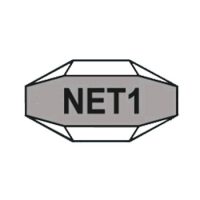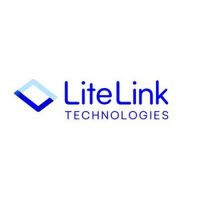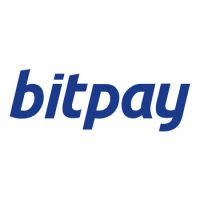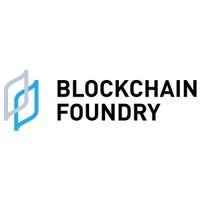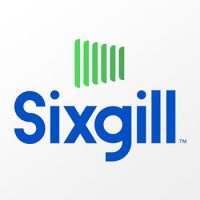Blockchain
RETRANSMISSION: HIVE Blockchain Provides March 2022 Production and Intel Update
This news release constitutes a “designated news release” for the purposes of the Company’s prospectus supplement dated February 2, 2021 to its amended and restated short form base shelf prospectus dated January 4, 2022.
Vancouver, British Columbia–(Newsfile Corp. – April 6, 2022) – HIVE Blockchain Technologies Ltd. (TSXV: HIVE) (Nasdaq: HIVE) (FSE: HBF) (the “Company” or “HIVE”) is pleased to announce the production figures from the Company’s global Bitcoin and Ethereum mining operations for the month of March 2022, with a BTC HODL balance of 2,568 Bitcoin and 16,196 Ethereum as of April 3, 2022. In addition to this the Company is pleased to announce two milestone accomplishments of reaching 2 Exahash of Bitcoin mining and 6 Terahash of Ethereum mining this month.
March 2022 Production Figures
HIVE is pleased to announce its March 2022 production figures and mining capacity:
- 278.6 BTC Produced
- 2.0 Exahash of Bitcoin mining capacity
- 2,459 ETH Produced*
- 4.58 Terahash of Ethereum mining capacity at beginning of March
- Increased to 6.1 Terahash of Ethereum mining capacity at end of March
*The Company’s production of ETH from GPU mining (including selective optimizations of GPU hashrate) has yielded a total ETH production of 2,549 ETH.
Frank Holmes, Executive Chairman of HIVE stated “We are very pleased to report HIVE has continued its extremely strong momentum in expanding our hashing power, notably our Ethereum mining hash power grew by 33% this month. In March we produced an average of 9.0 BTC per day, and we are pleased to note that as of today, we are producing approximately 9.0 BTC a day even after the recent difficulty increase of 4%. Our Bitcoin hashing power increased in March and at the calendar month-end our hashrate was 2.0 Exahash, which translated into a 6% increase in BTC mining on a month over month basis, while BTC prices corrected.”
Aydin Kilic, President & COO of HIVE noted “We continue to strive for operational excellence, ensuring that as we scale our hashrate as a company we also optimize our uptime, to ensure ideal Bitcoin and Ethereum output figures.” Mr. Kilic continued, “We also would like to provide an update on the BTC and ETH equivalency, where one can equate value of the coins produced daily. As such the ETH that HIVE produced during the month of March, equated daily, is approximately equal to a monthly total of 168.8 BTC, which we refer to as Bitcoin equivalent or BTC equivalent. This is in addition to the 278.6 BTC produced from our Bitcoin mining operations during March, for a total of 447.4 Bitcoin equivalent”.
The Company’s total Bitcoin equivalent production in March 2022 was:
- 447.4 BTC Equivalent Produced
- 14.4 BTC Equivalent produced per day on average
- 3.3 Exahash of BTC Equivalent Hashrate (BTC hashrate plus equivalent ETH Hashrate as of March 31, 2022)
1 Year Ahead Hashrate Growth Outlook
HIVE is pleased to update the market on the Company’s growth plans for the year ahead, as a result of strategic initiatives to secure ASIC and GPU hardware. The graph below presents the hashrate for all contracted ASIC and GPU hardware (with deposits in place), with the dark blue bars representing BTC hashrate, and the light blue bars representing the additional BTC equivalent hashrate from the ETH GPU hashrate. The numbers at the top are the combined total BTC equivalent hashrate expressed in Exahash. The Company will be at 6.2 Exahash of BTC equivalent hashrate in one year, up from 3.3 Exahash of BTC equivalent hashrate today.
To view an enhanced version of this graphic, please visit:
https://orders.newsfilecorp.com/files/5335/119463_791bf6314431b8d3_001full.jpg
Ethereum HODL to Fund Intel New Chips to Mine BTC
Over the past year our Ethereum HODL position outperformed our Bitcoin HODL. ETH is much more volatile than BTC and once again we have used the volatility to generate capital to expand our operations. We have sold down our ETH holdings to fund our Intel strategic relationship and the building of our rigs. We are very thrilled about the Intel deal for several reasons and due to the greater volatility of ETH we have traded out approximately 10,000 ETH coins to fund the expansion in our BTC channel. Further we have expanded our daily ETH production to replace coins we have sold. Our long-term strategy is grow our BTC footprint while using our ETH to help with this ambition. Our ETH production is allowing us to generate the highest margins from proof of work in the business. We are not concerned about the 6 year narrative that ETH will become only proof of stake in the immediate future, as evidenced by the robust and secure proof of work consensus mechanism has helped ETH process more transactions in USD volume at $11.4 trillion US, where Visa has done $10.4 trillion US in 2021. Our strategy to mine both BTC and ETH has allowed HIVE to generate some of the highest returns on invested capital for our shareholders while expanding our revenue and coin production.
Intel Update
Recently Intel has published more specifics on introduction of the Intel Blockscale ASIC, a game changing event for BTC miners. Intel has only made this chip available to select customers, of which Hive Blockchain is one of four customers globally. The Intel Blockscale will advance energy efficient hashing for proof of work consensus using green energy. Further their US designed high performing chips are up to 26 J/TH power efficiency at a very competitive and attractive price that fits into our strategy to generate high returns on invested capital for our shareholders. Hive Blockchain shares in the sustainability goals that are important to both Intel and ESG focused investors.
Network Mining Difficulty
The Bitcoin network difficulty increased as much as 4% and similarly the Ethereum network difficulty increased as much as 2% during the month of March. These factors impact our gross profit margins.
About HIVE Blockchain Technologies Ltd.
HIVE Blockchain Technologies Ltd. went public in 2017 as the first cryptocurrency mining company with a green energy and ESG strategy.
HIVE is a growth-oriented technology stock in the emergent blockchain industry. As a company whose shares trade on a major stock exchange, we are building a bridge between the digital currency and blockchain sector and traditional capital markets. HIVE owns state-of-the-art, green energy-powered data centre facilities in Canada, Sweden, and Iceland, where we source only green energy to mine on the cloud and HODL both Ethereum and Bitcoin. Since the beginning of 2021, HIVE has held in secure storage the majority of its ETH and BTC coin mining rewards. Our shares provide investors with exposure to the operating margins of digital currency mining, as well as a portfolio of cryptocurrencies such as ETH and BTC. Because HIVE also owns hard assets such as data centers and advanced multi-use servers, we believe our shares offer investors an attractive way to gain exposure to the cryptocurrency space.
We encourage you to visit HIVE’s YouTube channel here to learn more about HIVE.
For more information and to register to HIVE’s mailing list, please visit www.HIVEblockchain.com. Follow @HIVEblockchain on Twitter and subscribe to HIVE’s YouTube channel.
On Behalf of HIVE Blockchain Technologies Ltd.
“Frank Holmes”
Executive Chairman
For further information please contact:
Frank Holmes
Tel: (604) 664-1078
Neither the TSX Venture Exchange nor its Regulation Services Provider (as that term is defined in policies of the TSX Venture Exchange) accepts responsibility for the adequacy or accuracy of this news release.
Forward-Looking Information
Except for the statements of historical fact, this news release contains “forward-looking information” within the meaning of the applicable Canadian securities legislation that is based on expectations, estimates and projections as at the date of this news release. “Forward-looking information” in this news release includes, but is not limited to, business goals and objectives of the Company; and other forward-looking information concerning the intentions, plans and future actions of the parties to the transactions described herein and the terms thereon.
Factors that could cause actual results to differ materially from those described in such forward-looking information include, but are not limited to, the volatility of the digital currency market; the Company’s ability to successfully mine digital currency; the Company may not be able to profitably liquidate its current digital currency inventory as required, or at all; a material decline in digital currency prices may have a significant negative impact on the Company’s operations; the volatility of digital currency prices; continued effects of the COVID-19 pandemic may have a material adverse effect on the Company’s performance as supply chains are disrupted and prevent the Company from carrying out its expansion plans or operating its assets; and other related risks as more fully set out in the registration statement of Company and other documents disclosed under the Company’s filings at www.sec.gov/EDGAR and www.sedar.com.
The forward-looking information in this news release reflects the current expectations, assumptions and/or beliefs of the Company based on information currently available to the Company. In connection with the forward-looking information contained in this news release, the Company has made assumptions about the Company’s objectives, goals or future plans, the timing thereof and related matters. The Company has also assumed that no significant events occur outside of the Company’s normal course of business. Although the Company believes that the assumptions inherent in the forward-looking information are reasonable, forward-looking information is not a guarantee of future performance and accordingly undue reliance should not be put on such information due to the inherent uncertainty therein.
To view the source version of this press release, please visit https://www.newsfilecorp.com/release/119463
Blockchain
Wen Acquisition Corp Announces the Pricing of $261,000,000 Initial Public Offering
Blockchain
Blocks & Headlines: Today in Blockchain – May 15, 2025 (BTC’s Push, Pi Network Fund, Stablecoin Levers, JPM Pilot, OKX × Man City)

Every trading day, Blocks & Headlines decodes the most significant moves in blockchain technology and cryptocurrency, blending market updates, strategic analysis, and thought—so you can stay ahead in Web3’s fast-moving world. Today’s briefing zeroes in on five game-changing developments:
-
BTC’s $58 Million Raise for ETH Purchases – Bitcoin miners diversify treasury strategies.
-
Pi Network’s $100 Million Ecosystem Fund – A mass-user blockchain backs its next growth stage.
-
Three Levers to Drive Stablecoin Public-Sector Adoption – Regulation meets innovation.
-
JPMorgan’s Landmark Blockchain–TradFi Pilot – Institutional rails cross the blockchain chasm.
-
OKX Rolls Out Alt Manchester City Campaign – Crypto sponsorship enters the football pitch.
Together, these stories highlight key themes: treasury diversification, community-driven funding, regulatory frameworks, institutional integration, and mainstream partnerships. Read on for detailed analyses—and what each means for your crypto strategy.
Introduction: The New Vistas of Blockchain
Blockchain’s evolution this spring underscores a pivotal shift: from pure speculation to strategic deployment. Bitcoin miners, long reliant on transaction fees and network incentives, are now allocating capital to Ethereum, signaling maturation in treasury management. Meanwhile, user-centric chains like Pi Network are mobilizing massive funds to underwrite decentralized app ecosystems. Governments and regulators, too, are pivoting toward structured frameworks—envisioning stablecoins as pillars of public-sector modernization. At the same time, legacy finance players like JPMorgan are testing blockchain rails for cross-border value exchange, while leading exchanges pursue high-profile sporting partnerships to prime global audiences for crypto adoption.
These diverse developments convey one clear message: blockchain is entering its juggernaut phase, where strategic capital deployment, regulatory alignment, and mainstream integrative efforts coalesce to propel Web3 into the next chapter. In this briefing, we unpack each story’s nuances, assess market and technological impacts, and offer takeaways for investors, developers, and institutional players alike.
1. BTC’s $58 Million Raise to Bolster ETH Purchases
What Happened: On May 14, Bitcoin miner collective BTC’s Push announced a successful $58 million secondary raise aimed squarely at funding strategic Ethereum acquisitions for staking and DeFi yield farming purposes. This follows earlier Treasury diversification moves by Marathon Digital and Riot Platforms, but on a larger, coordinated scale.
Source: The Block
The Mechanics of the Raise
-
Participants & Structure: The round drew in leading crypto funds—Multicoin, Paradigm, and Pantera—via convertible note instruments, offering 8% interest and a conversion price tied to a 10% discount on ETH’s 30-day volume-weighted average price.
-
Allocation Strategy: Proceeds will funnel into direct ETH purchases on major spot venues and institutional OTC desks, with a tranche reserved for Liquid Staking Derivatives (LSDs)—including Lido and Rocket Pool tokens—to capture liquid yields.
-
Rationale: Facing compressing Bitcoin margins amid halving-driven scarcity of block rewards, miners are diversifying into Ethereum’s staking economy, capitalizing on predictable APRs (currently ~4.5%) and burgeoning DeFi revenue streams.
Market Implications
-
Cross-Chain Treasury Management: BTC miner allocators validating ETH staking signals an era where major protocol economies interweave on the balance sheets of institutional crypto actors.
-
Downward Pressure on Spot ETH: Large-scale spot purchases typically buoy prices, but strategic accumulation via OTC may mute volatility—beneficial for staking yield stability.
-
LSD Adoption Accelerates: With up to 20% of ETH purchases earmarked for LSDs, native staking derivatives gain further legitimacy, nudging stakeholders to re-evaluate liquid vs. locked staking trade-offs.
Opinion & Outlook
This raise epitomizes institutional sophistication in digital-asset portfolio engineering. Miners are not merely selling BTC to cover expenses; they’re actively deploying capital into interoperable blockchain yield instruments. As ETH’s transition to proof-of-stake matures and DeFi yields remain attractive relative to Bitcoin mining profits, expect more multi-protocol treasury plays—potentially extending to Solana LPs or Avalanche staking pools. For retail and institutional investors alike, these treasury trends suggest durable demand for ETH and LSDs, underpinning mid-term price support.
2. Pi Network Launches $100 Million Ecosystem Fund
What Happened: The Pi Network team unveiled a $100 million ecosystem fund dedicated to nurturing dApp developers, infrastructure providers, and NFT artists building within its rapidly scaling mobile-first blockchain.
Source: Cointelegraph
Fund Structure & Goals
-
Capital Allocation:
-
40% to Core Infrastructure: Node incentives, RPC services, indexing tools.
-
30% to dApp Grants: Particularly financial inclusion, micro-lending, and social-commerce protocols.
-
20% to NFT & Creator Programs: Artist residencies, marketplace subsidies.
-
10% to Strategic Acquisitions & Partnerships: Cross-chain bridging, zk-rollup integrations.
-
-
Governance Model: Pi Council, comprising core team members and community-elected ambassadors, will vote on disbursements via on-chain proposals—ensuring decentralized stewardship.
-
Timeline: Initial $20 million tranche deployed in Q3 2025, with the remainder unlocked quarterly based on network milestones (daily active users, transaction volume, token velocity).
Relevance & Potential
-
Mass-User Onboarding: With over 50 million active mobile miners, Pi Network boasts one of the largest captive user bases. Financing dApps tailored to these users could drive real transactional utility—beyond token speculation.
-
Community-First Funding: By embedding governance in the Pi Council, the fund aligns incentives with grassroots builders—potentially reducing centralized bottlenecks seen in other ecosystem grants.
-
Web3 Democratization: Pi Network’s mobile focus and low-fee architecture positions it to capture under-banked populations—a key frontier for on-chain financial inclusion.
Opinion & Outlook
The $100 million fund is a bold statement: Pi Network is shifting from token distribution hype to ecosystem activation. Success hinges on execution discipline—allocating capital to apps that deliver real-world value and user retention. Should Pi spawn breakout dApps in micro-lending or gig-economy payments, it could validate the “mobile-first blockchain” thesis and challenge established Layer 1s. Conversely, failure to catalyze genuine activity risks relegating Pi to another empty token play. Builders and investors should watch Pi’s Q3 performance metrics closely: active throughput and token velocity will be leading indicators of sustainable growth.
3. Blockchain Regulation & the Public Sector: Three Levers to Drive Stablecoins
What Happened: In a detailed analysis for Funds Society, blockchain policy experts identified three critical levers governments can deploy to accelerate stablecoin adoption in public-sector use cases: 1) Regulatory clarity via bespoke stablecoin frameworks, 2) Central bank digital currency (CBDC) interoperability mandates, and 3) Fiscal stimulus pilot programs.
Source: Funds Society
The Three Levers Explained
-
Bespoke Stablecoin Regulation:
-
Crafting targeted laws—distinct from securities or money-transmission statutes—can streamline issuer licensing, reserve requirements, and custody standards.
-
-
CBDC Interoperability Mandates:
-
Mandating APIs that allow stablecoins to seamlessly transact with emerging CBDCs (e.g., the e-Euro) prevents fragmentation and spurs innovation.
-
-
Stimulus & Grant Pilots:
-
Direct funding of social benefits via approved stablecoins (e.g., for disaster relief or tax rebates) bootstrap user familiarity and network liquidity.
-
Broader Implications
-
Public-Private Collaboration: Co-designing frameworks with established issuers (Circle, Paxos) and DeFi protocols (MakerDAO) ensures regulations accommodate on-chain composability.
-
Financial Inclusion: Well-regulated stablecoins can deliver faster, cheaper payouts to under-served communities—particularly across EU-Africa corridors.
-
Monetary Stability: Clear guidelines on reserve management and auditing bolster confidence, reducing redemption risk and contagion from issuer failures.
Opinion & Outlook
Stablecoins are the on-ramp to blockchain-based public finance. Yet, regulatory ambiguity has constrained adoption to niche corporate pilots. By wielding these three levers, policymakers can foster a harmonized, innovation-friendly environment—balancing risk mitigation with pace. For blockchain firms, engaging early in consultations and sandbox programs is vital. And investors should track jurisdictions piloting stablecoin grants—these will likely become blueprints for global standard-setting.
4. JPMorgan Bridges Blockchain and TradFi in Landmark Pilot
What Happened: JPMorgan executed its first public blockchain pilot facilitating an institutional cross-border payment between its New York and London operations, using Quorum-based channels and a tokenized USD settlement layer.
Source: CryptoSlate
Pilot Details
-
Settlement Tokens: JPM Coin (ERC-20), temporarily bridged via a permissioned Ethereum sidechain.
-
Transaction Flow:
-
NY branch issues JPM Coin to London counterparty.
-
Smart contract escrow holds tokens until KYC/AML checks complete.
-
Tokens redeemed and fiat disbursed in local currencies.
-
-
Performance Metrics: Settlement finality in <2 minutes (vs. 3–5 business days for SWIFT), throughput of 1,000 txs/sec, and integrated compliance reporting.
-
Next Steps: Scaling to 10+ global corridors, public-private partnerships with central banks exploring wholesale CBDC pilots.
Significance
-
TradFi Embrace of Permissioned Chains: A tacit acknowledgment that blockchain can enhance—not replace—existing rails, offering efficiency gains while preserving compliance controls.
-
Tokenized Fiat’s Viability: Demonstrates tokenization is not academic—banks can leverage stable, permissioned tokens to slash operational costs and risks.
-
CBDC Synergies: Success of JPM Coin pilots lays groundwork for eventual CBDC–stablecoin interoperability and reduces friction in wholesale liquidity management.
Opinion & Outlook
JPMorgan’s pilot is more than a proof-point; it’s a template for global banks to integrate blockchain pockets within legacy infrastructure, extracting value without wholesale disruption. Traditional financial institutions should monitor results closely—particularly the compliance integration and counterparty risk profiles. Meanwhile, DeFi advocates must acknowledge that permissioned blockchains will coexist with public networks, forming a hybrid financial ecosystem. As central banks advance CBDC initiatives, banks already comfortable with tokenized settlement gain a critical head start.
5. OKX Launches Alt Manchester City Campaign
What Happened: Leading crypto exchange OKX unveiled a multi-year sponsorship campaign with Manchester City FC, launching in-stadium NFT activations, fan token incentives, and Web3 watch parties across global OKX lounges.
Source: PR Newswire
Campaign Highlights
-
Fan Token Airdrops: Exclusive MCFC NFTs drop via OKX app at key Premier League matches.
-
Stadium Engagement: AR experiences—scan stadium QR codes to unlock private token presales and digital memorabilia.
-
Global OKX Lounges: Co-hosted events in Dubai, Singapore, and New York, featuring live match streaming with crypto-themed commentary.
-
Charity Tie-In: A portion of secondary NFT sales funds City in the Community foundation projects.
Market & Cultural Impact
-
Mainstream Awareness: Tapping Premier League’s 1 billion+ fanbase amplifies crypto legitimacy beyond niche circles.
-
Fan Token Renaissance: After token hype waned in 2022, OKX’s integrated approach—blending NFTs and real-world utility—may reignite engagement.
-
Regional Growth: Local activations in Asia and Middle East signal OKX’s strategic focus on fast-growing crypto markets hungry for experiential marketing.
Opinion & Outlook
OKX’s Manchester City partnership exemplifies crypto’s turn toward lifestyle branding, where fan loyalty and digital asset ownership intertwine. Success metrics will extend beyond token trading volumes to user-retention, event attendance, and charitable outcomes. Other exchanges and NFT projects should note the power of hybrid physical–digital activations: real-world events lend tangibility to virtual communities, critical for long-term adoption. As sports franchises increasingly seek blockchain partners, expect a new wave of Web3 stadiums, in which every seat becomes a node in a global fan network.
Conclusion: Five Takeaways for Blockchain Stakeholders
-
Inter-Protocol Treasury Moves: BTC miners backing ETH demonstrates that savvy actors view blockchains as interlinked asset classes—prompting reevaluation of single-chain investment strategies.
-
Community-Governed Ecosystem Funds: Pi Network’s $100 million push underscores the necessity of decentralized governance and milestone-based funding to catalyze genuine on-chain activity.
-
Regulation as Enabler: Structured stablecoin frameworks, CBDC interoperability, and stimulus grants illustrate how public-sector levers can accelerate blockchain’s maturation and real-world use cases.
-
TradFi Co-Optation of Blockchain: JPMorgan’s pilot shows that traditional banks will increasingly embed permissioned tokens and smart-contract rails into core operations—integration, not replacement, is the watchword.
-
Mainstream Partnerships Fuel Adoption: OKX’s Man City campaign spotlights the power of mixing digital assets with live events to onboard mass audiences and give blockchain a cultural foothold.
As blockchain’s infrastructure deepens—from miner balance sheets and institutional rails to fan experiences and public-sector deployments—stakeholders must adopt a multi-vector lens: blending treasury strategy, regulatory engagement, technological integration, and experiential marketing. Tomorrow’s top headlines will hinge on how well projects and institutions navigate this complex ecosystem—so stay tuned, stay diversified, and keep validating your own node of opportunity in Web3’s grand experiment.
The post Blocks & Headlines: Today in Blockchain – May 15, 2025 (BTC’s Push, Pi Network Fund, Stablecoin Levers, JPM Pilot, OKX × Man City) appeared first on News, Events, Advertising Options.
Blockchain
BDM Digital Initiates Promising Dialogue with Stanford Law School in Pursuit of Strategic Partnerships in Silicon Valley
Kezia Miranda at a meeting with Professor Roland Vogl, Executive Director of CodeX, affiliated with Stanford Law School, in California (USA).
-

 Blockchain Press Releases7 days ago
Blockchain Press Releases7 days agoBybit Surpasses 70 Million Users, Reinforces Commitment to Transparency and Institutional Growth
-

 Blockchain4 days ago
Blockchain4 days agoBlocks & Headlines: Today in Blockchain – May 12, 2025 | Rootstock, Zimbabwe Carbon Registry, Fastex, 21Shares, The Blockchain Group
-

 Blockchain Press Releases3 days ago
Blockchain Press Releases3 days agoBullish partners with the Gibraltar Government and GFSC to pioneer world’s first crypto clearing regulation
-

 Blockchain Press Releases4 days ago
Blockchain Press Releases4 days agoBybit Introduces BOB to P2P: Bolivian Traders Can Now Buy, Sell in Local Currency and Earn Commissions
-

 Blockchain Press Releases7 days ago
Blockchain Press Releases7 days agoUnleashing the Power of Futures Combo Bots on Bybit: Leveling up Futures Trading with More Rewards
-

 Blockchain7 days ago
Blockchain7 days agoBlocks & Headlines: Today in Blockchain – May 9, 2025
-

 Blockchain Press Releases3 days ago
Blockchain Press Releases3 days agoIndependent Audit from Hacken Confirms MEXC’s Strong Security Standards
-

 Blockchain Press Releases7 days ago
Blockchain Press Releases7 days agoBybit Unifies Loan Products to Enhance Capital Efficiency for Crypto Traders













